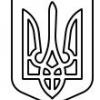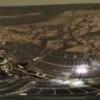Следващата мисия: DAWN
-
Последна активност
-
Любими и любопитни цитати на исторически личности 1 2 3 4 15
От Warlord, in Съвременна и обща проблематика
- 362 мнения
- 158043 прегледa
-
Интересни исторически снимки, изрезки, видеа, находки и др. 1 2 3 4 21
От Warlord, in Галерия - История
- 500 мнения
- 163799 прегледa
-
Папа римский Пий II ЭНЕЙ СИЛЬВИЙ ПИККОЛОМИНИ Богемская история и О ЛИТВЕ
От Геннадий Воля, in Russian
- 5 мнения
- 17 прегледa
-
Пилотиран космически кораб Крю Драгън, мисия Аксиом 4, първи пилотиран полет за Полша, Унгария и Индия след епохата Интеркосмос. Старт ЮНИ 2025 г.
От SAlexandrov, in Космически науки
- 5 мнения
- 178 прегледa
-
- 195 мнения
- 7694 прегледa
-
-
Последно разглеждащи 0 Потребители
- No registered users viewing this page.





Препръчано мнение
Напиши мнение
Може да публикувате сега и да се регистрирате по-късно. Ако вече имате акаунт, влезте от ТУК , за да публикувате.